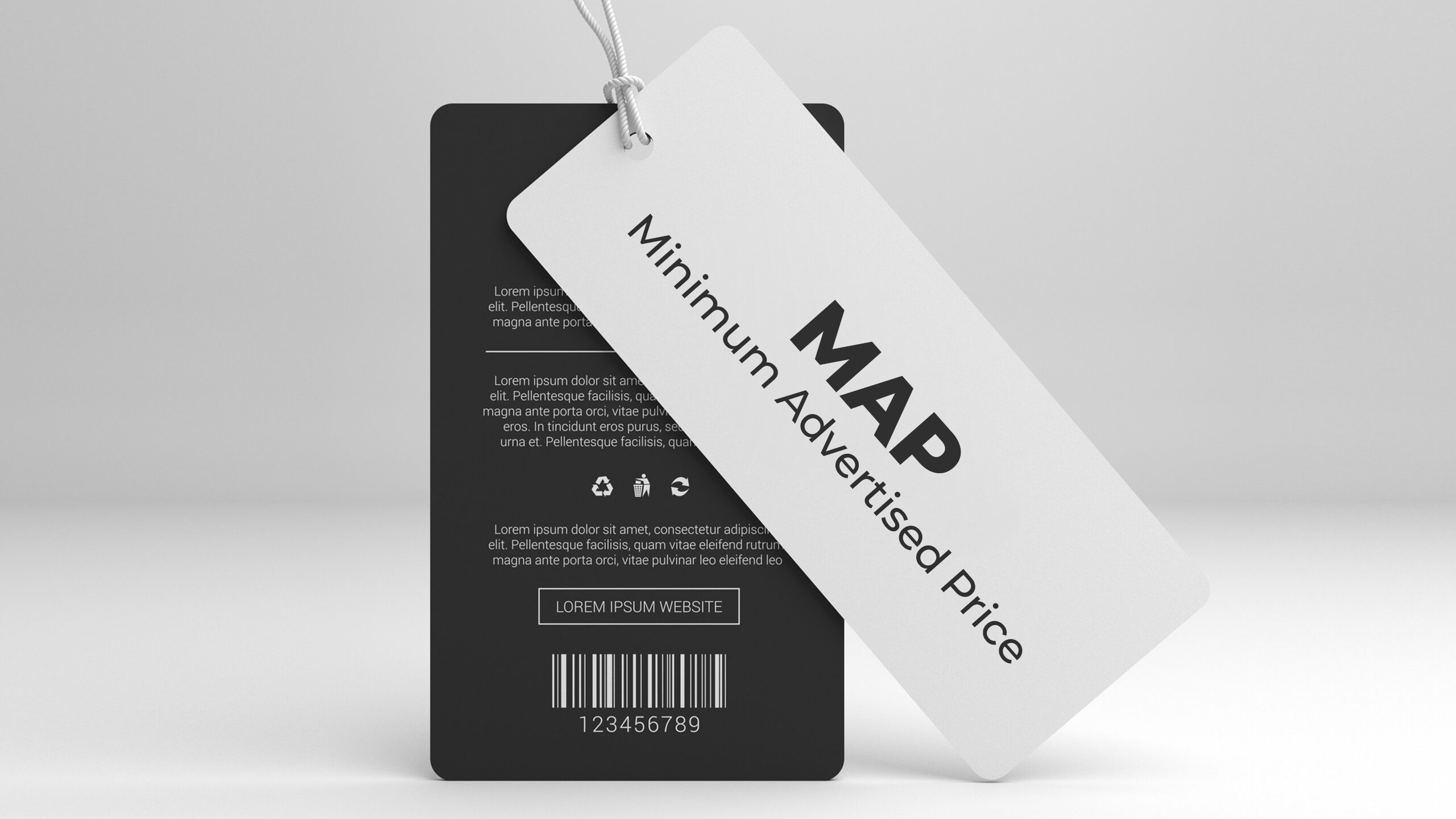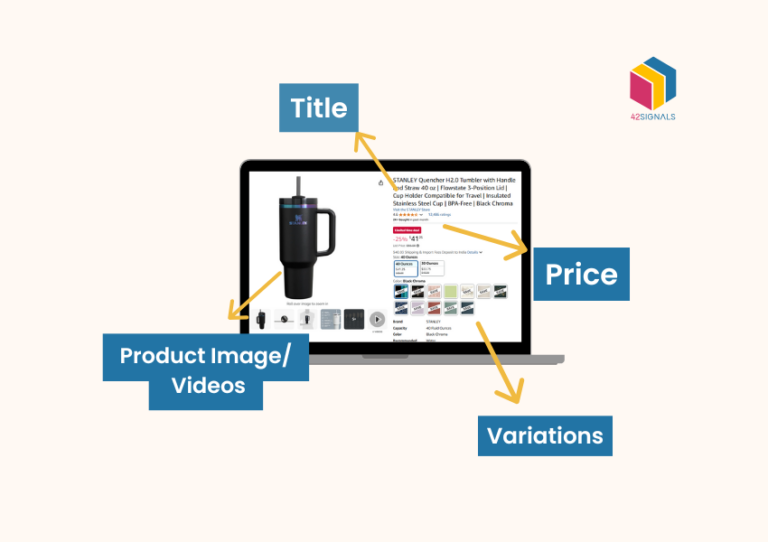Picture a scenario akin to a lawless Wild Wild West where retailers are not bound by rules. They sell the products at whatever price they choose without any consequences.
To them, it doesn’t matter. They make money either way. But to the brand they represent, it can be a huge blow.
Minimum Advertised Price (MAP) policies exist for this very reason. To keep sellers accountable and for brands to maintain their image.
However, enforcing MAP policies can be a challenging task for manufacturers and brand owners.
In this ultimate guide, we will walk you through the process of identifying MAP violations, from understanding what constitutes a violation to implementing best practices for resolving them.
Understanding MAP Violations
So, what’s a MAP violation?
Every brand selling a product has to determine the costs it takes to produce the product and the price they want to sell it for. These values incorporate all the costs associated with raw materials, manufacturing, inventory, shipping, etc. to determine a fair asking price.
While the profit margins can vary from product to product, brand to brand, there’s usually a thick margin slab to play with. This is usually done to offer discounts and lower prices during special sales and incentivize customers to buy.
The problem arises when retailers of the brand go lower than the minimum price value. For example, the iPhone 14 can be sold anywhere between Rs. 65,000 – 70,000. Apple still makes a substantial profit from this amount. When it’s sold by either authorized or unauthorized sellers at Rs. 55,000 on certain platforms, can you imagine what will happen?
It’s pandemonium. Sales will shoot up, and customers who did buy the item from legitimate sources will feel cheated, Apple may face losses and what’s even worse is that it may sour the brand’s perception.
Image Source: 42Signals
These violations can harm the brand’s reputation, erode profit margins, and create pricing disparities among retailers.
Thus, identifying MAP violations is essential for maintaining a level playing field in the marketplace and ensuring that all retailers adhere to the same pricing standards.
Let’s explore the most common types of MAP violations you may encounter.
Identifying Common Types of MAP Violations
1. Direct Price Violations
This is the most straightforward type of MAP violation, where a retailer explicitly advertises a product below the minimum advertised price. This can be identified by regularly monitoring and reviewing retailer advertisements and promotional materials.
2. In-cart Discounts
Some retailers use in-cart discounts or coupon codes to offer prices lower than the MAP. These violations require monitoring of the entire purchasing process, including the final price displayed during checkout.
3. Bundling Violations
MAP violations can also occur when a retailer bundles products together and advertises the bundle at a price lower than the combined individual MAP prices. Tracking bundled promotions and assessing the overall pricing is necessary to identify these violations.
4. Off-site Violations
Retailers may engage in MAP violations on external platforms such as online marketplaces or social media channels. These violations require regular monitoring of third-party websites and online platforms where products are listed.
5. MAP Evasion Techniques
Some retailers employ tactics such as hiding prices until products are added to the cart or displaying prices below the MAP on product detail pages. Detecting such evasive techniques may require advanced monitoring and data analysis.
Now that we understand the common types of MAP violations, let’s look at the step-by-step process of identifying and addressing them.
Steps for Identifying MAP Violations
Image Source: Minderest
1. Establish monitoring mechanisms
Set up a systematic process to monitor various online and offline channels where your products are advertised. This includes retailer websites, online marketplaces, social media platforms, and offline advertisements.
2. Develop a comprehensive product database
Create a centralized database containing product information, including the MAP, MSRP, and other relevant details. This will serve as a reference for accurately identifying violations.
3. Regularly review retailer advertisements
Monitor and review retailer advertisements, both online and offline. This involves checking websites, flyers, catalogs, and promotional materials for any mentions or displays of prices that are below the MAP.
4. Leverage technology
Utilize advanced software solutions like 42Signals that can automate the monitoring process and quickly identify potential MAP violations. These tools can scan multiple platforms simultaneously, saving you time and effort.
5. Analyze pricing patterns
Investigate pricing patterns across different retailers and channels to identify any consistent violations. Look for instances where a retailer consistently prices products below the MAP or engages in frequent promotional activities that violate the policy.
4. Monitor customer complaints
Keep an eye on customer feedback and complaints about pricing to identify any potential MAP violations. This can help uncover instances where retailers may be offering unauthorized discounts or incentives.
By following these steps, you will be well-equipped to identify MAP violations efficiently and it may be enough for most brands.
But to effectively detect and address violations, it’s important to leverage advanced techniques and best practices.
Advanced Techniques for Identifying MAP Violations
1. Price scraping
Employ price scraping tools or services to collect and analyze pricing data from various online retailers. This can help identify price discrepancies and potential violations.
2. Monitor competitor pricing
Keep a close watch on competitor pricing to identify situations where a retailer undercuts the MAP to gain a competitive advantage. This can be done through manual monitoring or by using software solutions that track competitor prices.
3. Monitor dynamic pricing
Dynamic pricing techniques, which involve adjusting prices in real time based on market demand, can sometimes lead to MAP violations. Monitor fluctuations in pricing to detect any potential violations caused by dynamic pricing algorithms.
4. Utilize data analytics
Leverage data analytics tools and techniques to analyze large sets of data and identify patterns or anomalies that may indicate MAP violations. This can help identify trends across retailers, time periods, or product categories.
Implementing these advanced techniques, in addition to the earlier steps, can significantly enhance your ability to identify MAP violations and take appropriate action.
Best Practices for Resolving MAP Violations
So, what do you do once you’ve detected MAP violations?
1. Communicate with the retailer
An obvious first step before taking any drastic action. Talking to the seller and informing them of MAP compliance usually solves any further problems. This helps establish a firm hand between your brand and the seller to avoid new issues arising.
2. Enforce consequences
Clearly communicate the consequences of continued MAP violations to the retailer. This can include penalties, warnings, or ultimately, cutting off the retailer’s supply of your products.
3. Monitor compliance
Continuously monitor the retailer’s compliance with the MAP policy, even after the violation has been addressed. Regularly check their advertisements, pricing, and promotions to ensure adherence to the agreed-upon standards.
4. Train and educate retailers
Offer training and educational resources to help retailers understand the importance of MAP policies and how to comply with them. This can help prevent future violations and foster a better understanding between manufacturers and retailers.
5. Leverage technology for enforcement
Consider implementing automated solutions that can monitor and enforce MAP compliance in real time. These tools can quickly flag violations and help streamline the resolution process.
By following these best practices, you can effectively address MAP violations and maintain fair pricing across your retail channels.
Conclusion
Monitoring MAP violations is a continuous process. It requires the right amount of diligence and regular observation to stay on the right track.
The silver lining is that brands don’t have to take this challenge on themselves. Tools like 42Signals help several e-commerce businesses monitor and flag sellers to take the proper action at the right time.
To learn more about how we can help you, get in touch with us at sales@42signals.com







